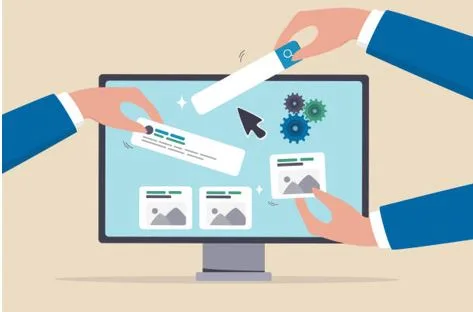Financial Fitness: 5 Habits to Improve Your Money Mindset
Money is more than numbers on a screen, it shapes our financial wellness, our goals, and how we respond to life events. If you’ve ever felt stuck in a cycle of overspending, debt worries, or scarcity thinking, you’re not alone.
Shifting your financial mindset can unlock better decisions, less stress, and steady progress toward your goals.
In this article, you will learn five practical habits that serve as financial wellness tips and illustrate financial wellness examples to reshape how you think about money and improve your financial health.
Each habit combines simple actions with proven behavior-change techniques and financial health strategies. Along the way, you will explore different money mindsets and learn how to shift them. We highlight tools, community support, and steps for effective financial wellness planning.
Follow these steps consistently and you will notice reduced anxiety, clearer goals, and more confident choices. Let’s begin with the first habit: cultivating a growth-oriented money mindset.
Cultivate a Growth-Oriented Money Mindset
Your financial mindset guides every money decision. A growth-oriented money mindset treats skills and results as improvable through effort and learning. By embracing challenges and viewing setbacks as lessons, you build resilience.
Incorporating financial wellness tips like journaling and affirmations helps identify and replace limiting beliefs. Over time, these practices improve your understanding money flows and support long-term behavior change.
Journal Daily Money Wins
Tracking small victories reinforces progress. Each evening, list two or three money wins. You can see financial wellness examples as you note every small step.
- A purchase you delayed after reconsidering need
- A day you stuck to your spending limit
- Interest earned, debt reduced, and credit score improved
Use Morning Affirmations
Start each day with positive statements to shift away from scarcity thinking. Repeat phrases such as:
- I am capable of growing my wealth.
- Every dollar I save brings me closer to my goals.
- I learn from every financial choice I make.
Reflect on Past Money Lessons
Weekly reflection helps reframe mistakes as growth opportunities. Ask yourself:
- What did I learn from my last budgeting mistake?
- How can I apply that lesson this week?
- Which strategies helped me save more effectively?
By combining consistent journaling, affirmations, and periodic reflection, you cultivate an abundance mindset. You will notice reduced financial anxiety, more confident decisions, and improved financial wellness over time.
Calculate Your Net Worth and Create a Budget
First, list your assets and liabilities to calculate your net worth. Next, choose a budgeting framework that aligns spending with your goals. A clear snapshot guides smarter decisions, supports financial wellness planning, and provides a foundation for understanding money basics.
Asset and Liability Worksheet
Use a simple worksheet or spreadsheet template. List assets like bank balances, investment accounts, retirement funds, and real estate value. Then list liabilities such as credit card debt, outstanding loans, and your mortgage balance.
Assets:
- Bank balances
- Investment accounts
- Retirement funds
- Real estate value
Liabilities:
- Credit card debt
- Outstanding loans
- Mortgage balance
Calculating Your Net Worth
Subtract total liabilities from total assets. A positive net worth means you have more assets than debts. Track this figure monthly or quarterly to monitor progress and guide your budgeting choices.
Choosing a Budgeting Method
Compare two popular approaches:
- Zero-based budget assigns every dollar of income to a category, enforcing full allocation.
- 50/30/20 rule uses 50 percent for needs, 30 percent for wants, and 20 percent for savings and debt repayment.
Pick the method that matches your income stability and spending habits. Adjust percentages or categories as needed.
Automating Expense Tracking
Link your bank and credit accounts to a budgeting app or online portal. Create rules or categories for recurring payments and enable alerts for overspending or unusual transactions. Review reports weekly to catch trends and refine your plan.
Track net worth and budget performance monthly. With regular updates, you maintain control and improve your strategy as your financial situation evolves. This supports improving financial health.
Avoid Lifestyle Inflation with Habit Stacking
Lifestyle inflation occurs when higher income leads to higher spending on nonessential items. Over time these costs can outpace raises and stall your financial wellness goals. Habit stacking helps you capture income increases and lock them into savings first.
Identify Trigger Moments
Major pay increases, promotions, or milestone events often prompt lifestyle upgrades. Before making any changes, track spending for 30 days to spot money leaks. Look for unused subscriptions, impulse buys, or convenience fees. Use that insight to set a realistic savings target when your next raise arrives.
Stack Saving Habit on Payday
Automate a portion of each paycheck to land directly in savings. Apply the 50/30/20 rule and divert at least 20 percent into a dedicated account each payday.
Set Up Automatic Transfers
- Schedule your bank or payroll system to send funds by default.
- Treat the transfer as a fixed expense you cannot skip.
Increase Savings Rate Gradually
Every time your income rises, bump your automatic transfer by one or two percent. These small adjustments make saving feel natural. Over months or years, you will see a higher balance without straining your day-to-day budget.
Differentiate Needs vs Wants with a Decision Matrix
Needs are expenses required for basic living such as housing, food, health care, and transportation. Wants are nonessential items like coffee runs, subscriptions, dining out, and vacations. Mapping your expenses into a two-by-two decision matrix helps you prioritize essentials and curb impulse buys.
Create Your Needs/Wants Matrix
List typical costs and rate each on necessity (1 low to 5 high) and frequency (1 rare to 5 frequent). Plot high-scoring necessity items in the top-right quadrant and nonessential, infrequent items in the bottom-left quadrant.
Example scoring:
- Rent: necessity 5, frequency 5
- Subscription service: necessity 2, frequency 4
- Coffee run: necessity 1, frequency 5
Set Spending Thresholds
Determine maximum allotments for essential categories before funding wants. For example, cap housing, utilities, and groceries at 60 percent of net income. Only after covering these needs can surplus funds support discretionary expenses.
Review Monthly Discretionary Costs
At the end of each month, audit nonessential spending. Highlight high-frequency wants and identify reduction opportunities. Consider trimming duplicate subscriptions or setting a weekly budget for treats. Regularly revisiting this matrix ensures needs stay funded first and discretionary spending aligns with financial goals.
Start Saving Early and Build an Emergency Fund
Thanks to compound interest, each dollar you save earns returns that grow over time. No one starts too early or too late but starting sooner gives your savings the longest runway to grow. Building this safety net supports financial wellness planning and reduces stress.
Comparing Retirement Vehicles
Choosing the right retirement account deepens your understanding money and supports long-term financial wellness. Consider these options:
401(k)
- Employer-sponsored plan funded by employee contributions
- Pre-tax dollars lower your taxable income
- Often includes employer match that boosts savings
Traditional IRA
- Pre-tax contributions may be tax deductible
- Earnings grow tax deferred until withdrawal
- Income limits apply for deduction eligibility
Roth IRA
- Contributions made with after-tax dollars
- Qualified withdrawals are tax free
- Ideal if you expect to be in a higher tax bracket later
For diversification, consider a 401k to gold IRA rollover as a financial wellness example.
Emergency Fund Target Calculator
Calculate your emergency fund target by listing fixed costs like housing, utilities, insurance, and loan payments. Total your average monthly essentials and multiply by three for a lean buffer or six for broader coverage.
- For example, $3,000 in expenses equates to a $9,000 to $18,000 fund.
- Automate transfers of at least 10 percent of each paycheck to accelerate progress.
Replenishment Plan After Withdrawal
When you tap your emergency fund, reset your target and rebuild within six months. Set up recurring transfers and allocate windfalls such as bonuses or tax refunds toward the balance. Trim nonessential subscriptions and redirect those savings into your fund until it is fully restored.
Leverage Technology and Community for Accountability
Technology combined with peer support can keep you focused on saving and budgeting goals. Use apps that track spending, monitor net worth, and automate saving. Then connect with online or local groups to share progress, troubleshoot challenges, and celebrate milestones. This is a core financial health strategy.
Top Budgeting and Reminder Apps
- Mint: Links bank and credit accounts, categorizes expenses, and sends bill-payment reminders.
- You Need a Budget (YNAB): Enforces zero-based budgeting and issues real-time notifications for overspending.
- Personal Capital: Aggregates investment and retirement accounts to provide a clear snapshot of your net worth.
These financial wellness examples show how technology can simplify tracking.
Automated Saving Tools
Set up rule-based transfers or round-up features to pay yourself first:
- RBC Mobile NOMI: Moves spare funds to savings automatically and forecasts cash flow to prevent overdrafts.
- Acorns: Rounds up everyday purchases and invests the spare change.
- Bank auto-transfer: Schedule fixed transfers from checking to a high-yield savings account each payday.
Joining Financial Support Communities
Peer groups drive accountability and fresh ideas. Try these options:
- Reddit forums: r/PersonalFinance and r/Frugal offer Q&A, tips, and community challenges.
- Facebook groups: Financial Independence and savings-challenge communities share resources and success stories.
- Local meetups: Search Meetup for budgeting workshops or investor cohorts near you.
Regular check-ins and open discussions reinforce habits, promote progress over perfection, and help curb impulse spending.
Conclusion
You now have a clear roadmap to strengthen your financial mindset and build long-term financial fitness. These five financial wellness tips support improving financial health and how to improve financial wellness in your life.
- Cultivate a growth-oriented financial mindset with daily journaling, affirmations, and weekly reflections.
- Calculate your net worth and choose a budgeting method that fits your goals. Automate expense tracking to stay on target.
- Prevent lifestyle inflation by stacking savings habits on payday and gradually increasing your savings rate.
- Use a needs versus wants decision matrix to prioritize essentials and control discretionary spending.
- Start saving early in retirement accounts and build an emergency fund sized for three to six months of expenses.
To reinforce these habits, leverage technology and community support through apps, round-up tools, and peer forums. Regular check-ins ensure accountability and momentum.
Financial fitness is not a one-time event, it is a steady process. Small, consistent steps compound over time, reducing stress and boosting confidence. Choose one habit to focus on today, set up a simple system, and track your results. As you gain momentum, add the next habit until all five become part of your routine.
Your journey toward a healthier financial wellness starts now. Take control of your finances, stay accountable, and watch your goals come within reach.




